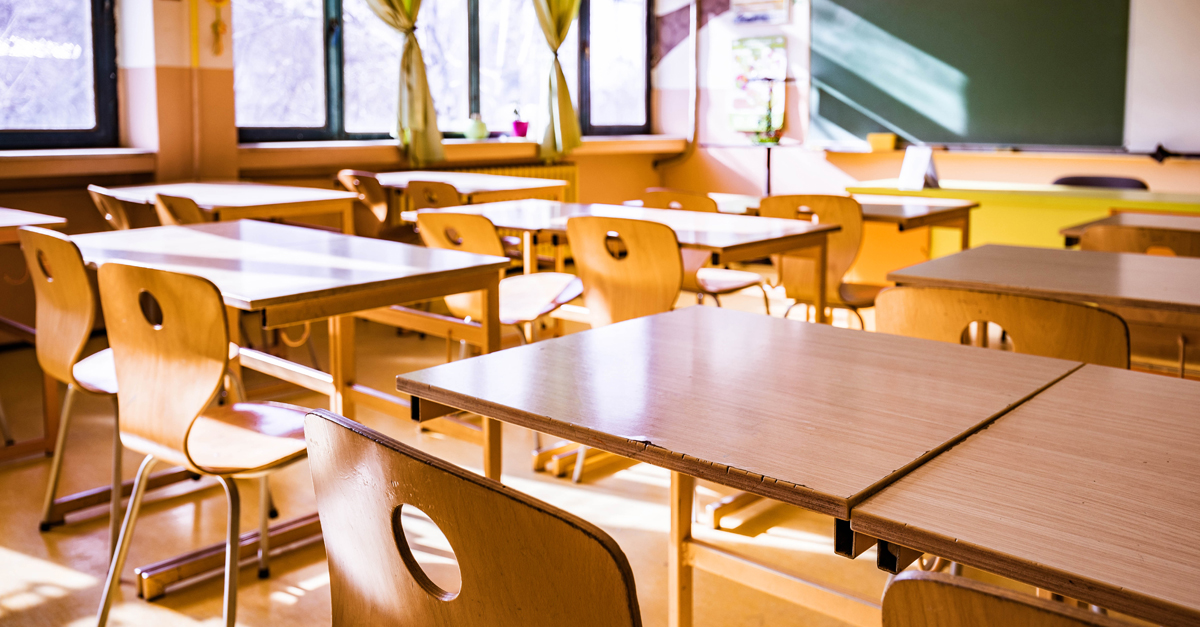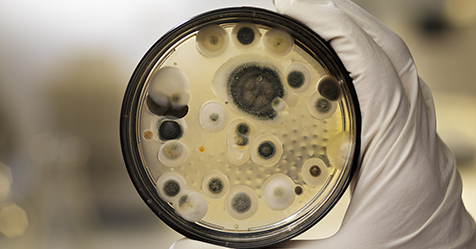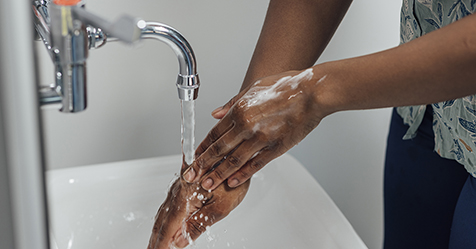This article originally appeared in FMJ, the official magazine of IFMA. Its inclusion on CMM’s website is part of a strategic partnership between ISSA, which owns the CMM brand, and IFMA.
The COVID-19 pandemic profoundly reshaped education across the globe, leaving schools, students, and communities grappling with its lasting effects. While the immediate health crisis may have subsided, one of the most pressing and enduring challenges that remains is the significant increase in school absenteeism. Students have returned to classrooms, but the alarming rise in chronic absenteeism—defined as missing 10 percent or more of the school year—shows no signs of slowing down. This troubling trend has far-reaching consequences, affecting not only students’ academic performance but also their overall well-being, health, and future opportunities.
Chronic absenteeism has become a top priority for educators, families, and policymakers alike, with schools struggling to ensure that students are present and engaged. The facility management industry plays a crucial role in maintaining safe learning environments, is an indispensable partner in this effort.
Effective hygiene and disinfection practices have emerged as critical tools in the fight against absenteeism. Schools are recognizing that maintaining clean, safe and healthy environments is essential not just for preventing the spread of illness but also for supporting students’ regular attendance. The ongoing need to protect students, staff and faculty from contagious diseases, including emerging threats, has evolved into a long-term necessity, making the FM industry more vital than ever. By embracing innovative cleaning technologies and improving air quality, the FM sector is at the forefront of creating environments where students can thrive without the fear of illness keeping them out of the classroom.
The Post-Pandemic Absenteeism Crisis
The rise in school absenteeism has been alarming. In the U.S., more than 16 million students were classified as chronically absent during the 2021-2022 school year, a staggering increase from the 8 million reported before the pandemic. This doubling of absenteeism rates has put immense pressure on schools and families. The problem is especially pronounced in vulnerable populations, including students from low-income households, students of color and those with disabilities, who are disproportionately affected by chronic absenteeism.
The situation in Florida serves as a prime example of this growing crisis. The Florida Department of Education reported that more than 20 percent of students missed 21 or more days of school during the 2021-2022 school year. In Miami-Dade County, the fourth-largest school district in the United States, absenteeism rates exceeded 30 percent in some schools.
This trend is mirrored globally, with countries including the U.K., Australia and Canada all reporting significant increases in absenteeism.
The consequences of absenteeism are far-reaching. Studies have shown that students who miss more than 15 days of school in a year are seven times more likely to drop out of high school. Additionally, every year of missed schooling is associated with a loss of approximately $10,000 in lifetime earnings. These outcomes underscore the long-term economic and social costs of absenteeism, making it a critical issue that demands attention.
The vital role of hygiene & disinfection in schools
Maintaining high standards of hygiene and disinfection is essential in reducing absenteeism and creating a healthy learning environment. Schools are high-traffic areas where students, teachers and staff interact closely, making them hotspots for the transmission of contagious illnesses like the flu, colds and new variants of COVID-19. Regular and effective cleaning practices are therefore vital in preventing outbreaks and ensuring that schools remain safe for students to attend.
Surface disinfection plays a particularly important role in minimizing the spread of germs. High-touch areas—such as desks, doorknobs, keyboards and shared equipment—should be cleaned frequently and thoroughly. Consistent disinfection of these surfaces can greatly reduce the transmission of pathogens, preventing outbreaks that can lead to increased absenteeism. For schools, prioritizing cleanliness is not only a public health measure but also an essential component of student well-being and academic success.
Beyond the immediate reduction of illness transmission, maintaining a clean school environment has psychological benefits as well. A clean and orderly environment fosters a sense of safety and security for students, which contributes to their overall mental well-being and academic engagement. In contrast, poorly maintained or unsanitary schools can contribute to feelings of anxiety or disengagement, further exacerbating absenteeism.
Air quality & its impact on student health
One often-overlooked aspect of school health is indoor air quality (IAQ). Poor IAQ in classrooms can have a significant impact on student attendance and performance. Respiratory illnesses, such as asthma, are exacerbated by inadequate ventilation and the presence of airborne allergens, dust and mold. Asthma, in particular, is a leading cause of school absenteeism in the U.S., affecting 6 million children and resulting in more than 13 million missed school days annually.
Improving IAQ in schools is crucial for reducing absenteeism linked to respiratory illnesses. Simple measures, such as ensuring proper ventilation, using high-efficiency air filters and regularly cleaning HVAC (heating, ventilation, and air conditioning) systems, can make a substantial difference. According to the American Lung Association, better IAQ can help alleviate asthma symptoms and reduce the likelihood of students missing school due to respiratory issues.
Moreover, research has shown that better IAQ has additional benefits for students. A study conducted by the Harvard T.H. Chan School of Public Health found that improving ventilation and air filtration in classrooms can enhance cognitive function by as much as 15 percent. This underscores the broader impact of clean air on both health and academic performance, making it a key priority for facilities management in educational settings.
Innovative cleaning technologies: A game-changer for schools
The COVID-19 pandemic accelerated the adoption of new cleaning technologies that offer more effective and efficient ways to disinfect school environments. One of the most notable advancements has been the use of electrostatic sprayers, which can disinfect large areas quickly and evenly. By charging disinfectant particles, these sprayers ensure that surfaces are coated more thoroughly, reducing the time and labor required to maintain a clean environment.
Another cutting-edge technology being used in schools is ultraviolet-C (UV-C) light disinfection. UV-C light has been shown to kill 99.9 percent of bacteria and viruses, including SARS-CoV-2, the virus responsible for COVID-19. UV-C light devices can be used in classrooms, hallways, and shared spaces to provide an additional layer of protection against pathogens. These technologies allow schools to maintain high standards of cleanliness without overwhelming cleaning staff, making them a cost-effective solution for improving hygiene.
Antimicrobial coatings are also being employed to provide long-lasting protection on frequently touched surfaces. These coatings can inhibit the growth of bacteria and viruses for extended periods, reducing the need for constant cleaning while still ensuring that surfaces remain safe. By incorporating these innovative solutions, schools can better protect students and staff from illness and reduce the number of days missed due to sickness.
The importance of staff training and protocols
While advanced cleaning technologies are valuable, they are only as effective as the people using them. Proper training for cleaning staff is critical to ensuring that disinfection procedures are carried out correctly and consistently. The Occupational Safety and Health Administration (OSHA) recommends regular training for cleaning personnel to help prevent the spread of infectious diseases in schools.
Training programs should cover the safe and effective use of cleaning products, the importance of following disinfection protocols, and emergency response procedures in the event of an outbreak. Schools that invest in training for their cleaning staff have seen tangible results, including a 20 percent reduction in the spread of illnesses like the flu. This translates to fewer sick days for both students and staff, directly impacting absenteeism rates.
Additionally, school staff and teachers can play a role in promoting good hygiene practices among students. Teaching students the importance of regular handwashing and other preventive measures, such as using hand sanitizer and avoiding touching their faces, can help reduce the spread of germs in the classroom. Engaging students in these efforts empowers them to take an active role in maintaining a healthy environment for themselves and their peers.
A collaborative effort: Schools, communities & FM
Addressing the issue of school absenteeism requires a collaborative approach. Schools cannot tackle this problem alone. Parents, educators, FMs and the wider community must work together to create environments that support student health and attendance. Schools can engage with parents by sharing information on hygiene practices at home, promoting regular check-ups with healthcare providers and encouraging open communication about students’ health.
FMs play a central role in ensuring that schools remain clean, safe and conducive to learning. Their expertise in cleaning protocols, IAQ management, and the latest disinfection technologies is essential in helping schools meet today’s health challenges. Governments and policymakers can also support these efforts by providing funding for cleaning technologies, staff training and air quality improvements.
Building resilient and healthy schools for the future
Reducing post-pandemic absenteeism requires a comprehensive and sustained commitment to hygiene and disinfection. Schools must prioritize maintaining clean and safe environments to support student health, prevent the spread of illness and ensure that students can attend classes consistently. FM, through effective cleaning practices, innovative technologies, and collaboration with school staff, plays a pivotal role in achieving these goals.
The continued focus on hygiene and IAQ will not only reduce absenteeism but also improve academic outcomes and well-being for students. By creating healthy learning environments, schools can ensure that students are better equipped to thrive academically and personally. The lessons learned from the pandemic have underscored the importance of investing in long-term strategies for maintaining clean, safe and resilient schools. The path forward requires a collective effort, but with the right tools and practices in place, the future of education can be one where all students can succeed.




